Using the JVC9800 240 Hz camera
with the APAS System
Normally, the JVC9500 record at 60 fields per second. In order to
collect data at 120 fields per second you must press the "High Speed" button.
This will cause the following actions:
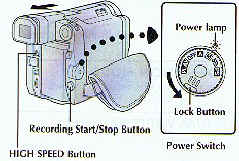
During the High Speed Recording, the image appears in the upper half
of the camcorder's display as shown in the illustration.
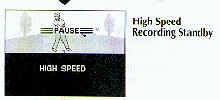
While the camcorder is connected to a monitor or the capture
card (using S-Video output, AV OUT, DV OUT), the screen is divided into 2, and the
image is displayed both in the upper and lower halves of the monitor as shown in the
illustration.
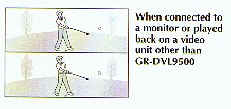
This effect allow the extraction of 240 Hz video images. The
top and bottom images are representing the two images 1/240 of a second apart. Through a
special developed software it is possible to re-arrange the fields consecutively at 240
Hz.
The following image show how the capture video looks:

It seems that the JVC corporation achieve this results
utilizing half of the CCD sensor for images separated from each other at 8.3 Milliseconds
which yield 240 fields per second.
The following image shows a capture video with the JVC camera
of a Millisecond clock. Since the LED of this old Millisecond clock is not fast enough to
shut off, sometimes it looks blared. However, as the JVC corporation specified in their
camera characteristics, these two horizontal images are 1/240 of a second from each other.
Utilizing the Variable shutter at 1/500 allows clear picture of any fast moving object.

Each image is separated from the other by 8.3
millisecond make it 240 fields per second. However, what is needed is software to re-build
the sequence in a way that consecutively frames can be digitized. And this is precisely
what Ariel Dynamics achieved.
The reason the JVC company decided to go with this high speed
recording is to allow the 240 frames per second, so images recorded in High Speed
Recording mode can be played back with high density in slow-motion. However, this ability
allow us to extract the 240 frames and re-organize them in a way for the APAS to be able
to digitize at that speed. Only the APAS system can do this at the present time. This
allow you to get 240 Hz camera for a very low price as compared to any cameras that go at
this frequencies. The JVC 9500 cost only $1300 ordering it from the net. You may
check at http://www.pricewatch.com to
find the best source for the camera. But you must need the APAS software to make
this camera work at 240 Hz with the APAS. At 60 Hz you do not need any additional
software. You may buy the JVC camera for regular video analysis at 60 Hz and then upgrade
it to the 240 Hz.
Here is an example how the APAS software work to extract the
fields from the 240 Hz JVC camera. The following image show several frames of a
large sequence that was recorded by the JVC 9500 camera: (Keep in
mind, that all the following images are highly compressed so it will take minimum time to
load them on your browser. The original video files are in much better quality when you
use it with the APAS system)

Next, the APAS digitizing module was running to
reveal the following image:
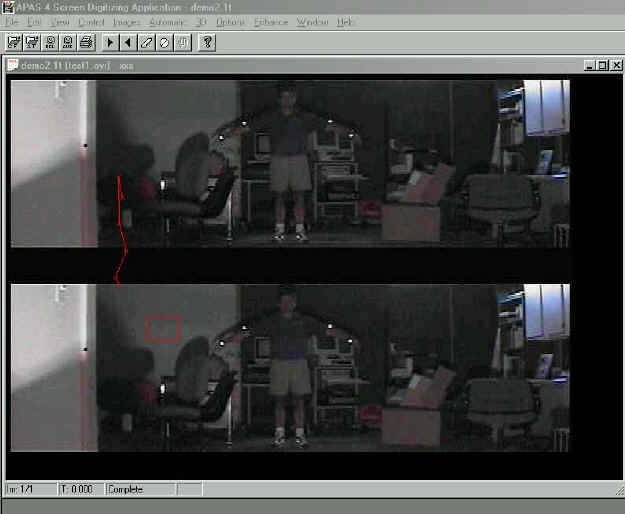
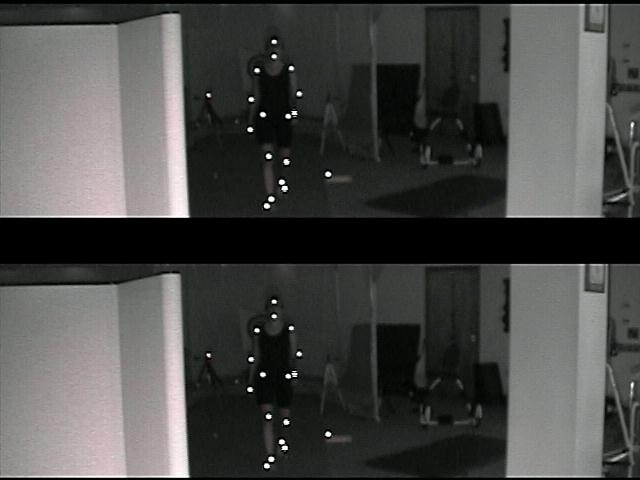
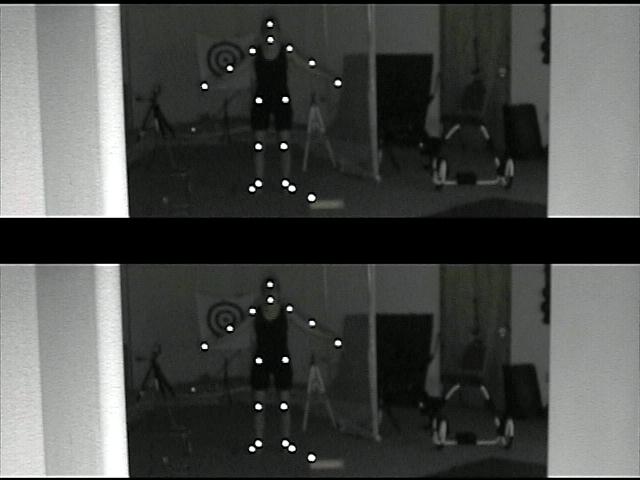
Now that the "double" images are shown
at 8.3 Milliseconds from each other, it is necessary to create a sequential
"frames" to be able to digitize the sequence at 240 fields per second.
The following image shows the high speed function to do
that:
First only one half of the image is display. This
is at high resolution of 720 x 480 !!!. Then the Digitizing program expand it to the
full screen for digitizing as shown in the following image.
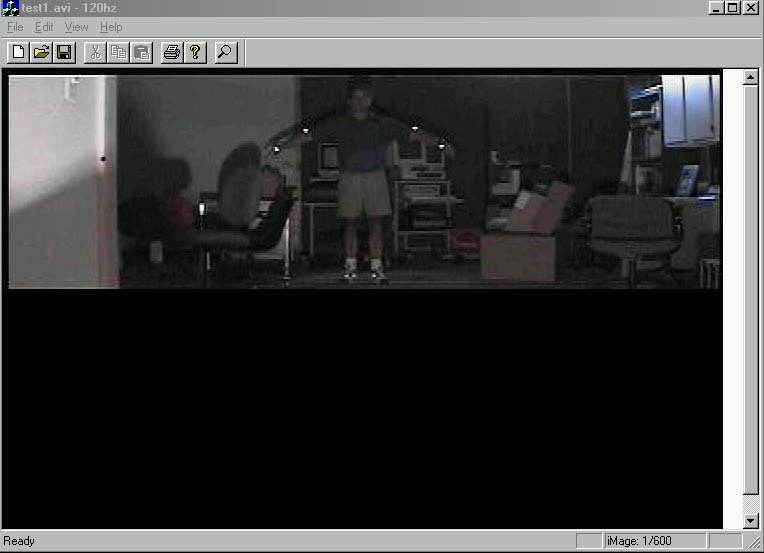
Now the Digitizing program expand the half screen high
resolution screen to a full screen:
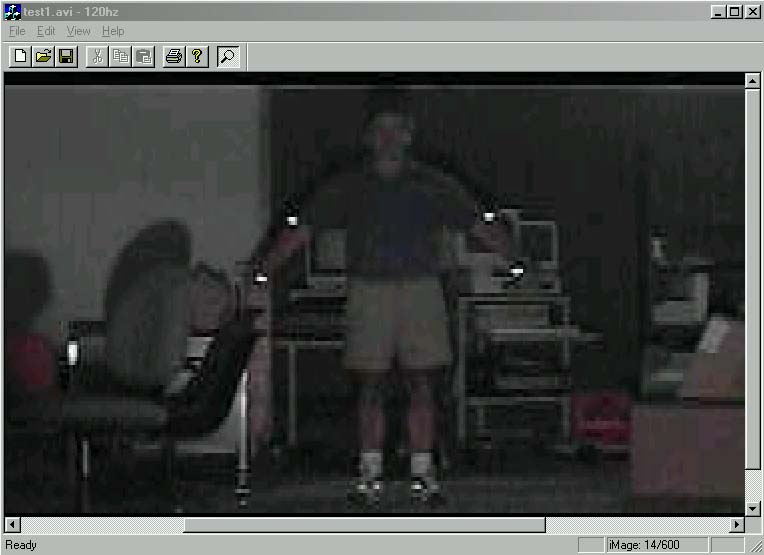
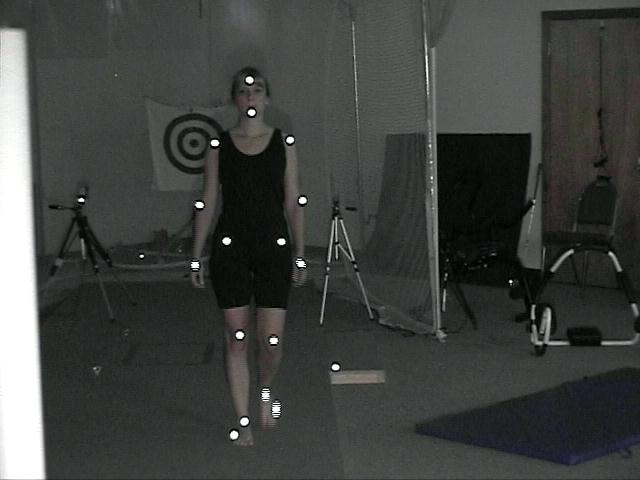
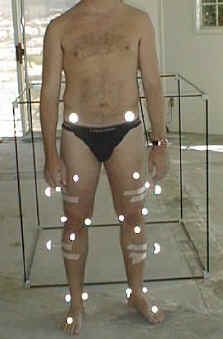
From here on, everything is normal. You can
digitize Automatically, Manually or combination of the two as you wish.
This is the story of great engineers from JVC who
created a great camera, and of software developers in Ariel Dynamics Inc, who adapted this
camera and through ingenious software development made it possible to extract 240 fields
per second for Biomechanical analysis system.
Ariel Dynamics, again, shown to be on the cutting age
of technology and provide the best technology for the lowest price to allow motion
analysis of any kind.
Now you can buy the full APAS system with 4 high
speed cameras at 240 frames per second for $25,000. If you bought similar hardware
from companies such as Motion Analysis, Vicon, Qualysis, Elite or Peak, it would cost you
for inferior software, more then $150,000. The APAS come with software integration
to full motion analysis, Analog input for Force Plates, and EMG, and export ability to
MathLab and Excell and others to allow most flexibility.
Also, you may
download the APAS system for trial and see if you like it. It would not cost you a penny.
